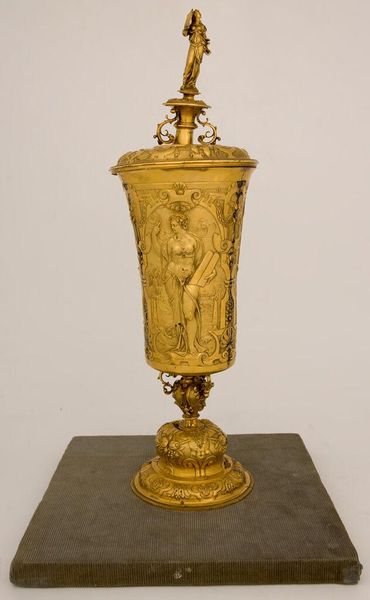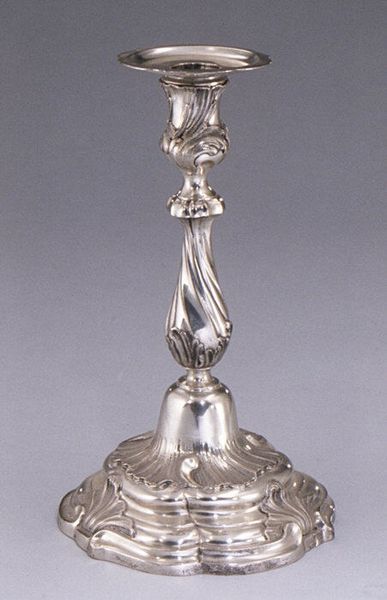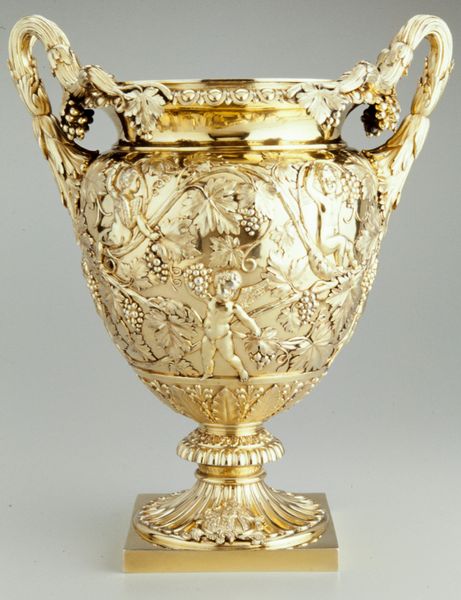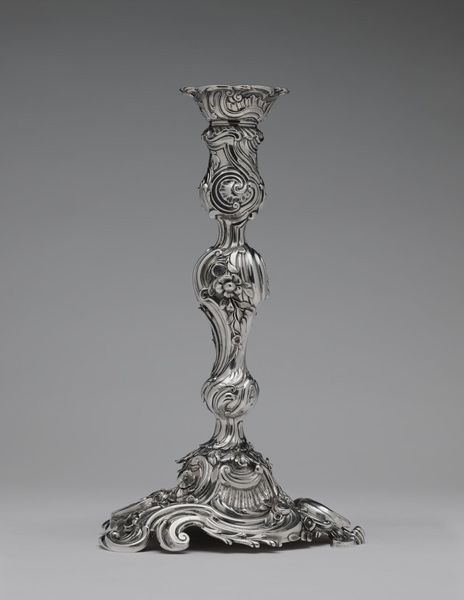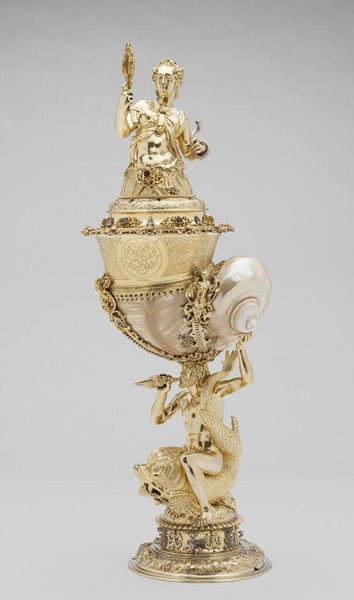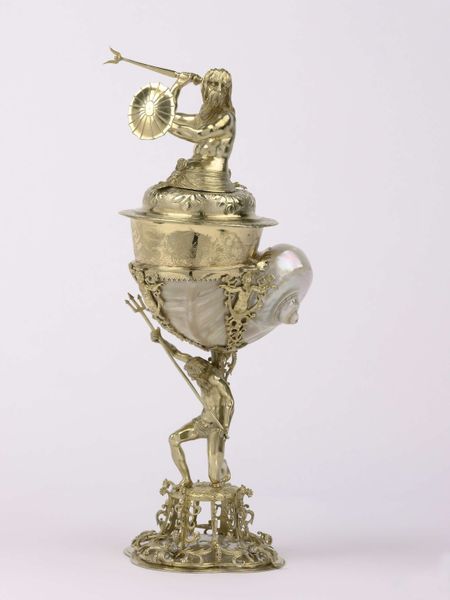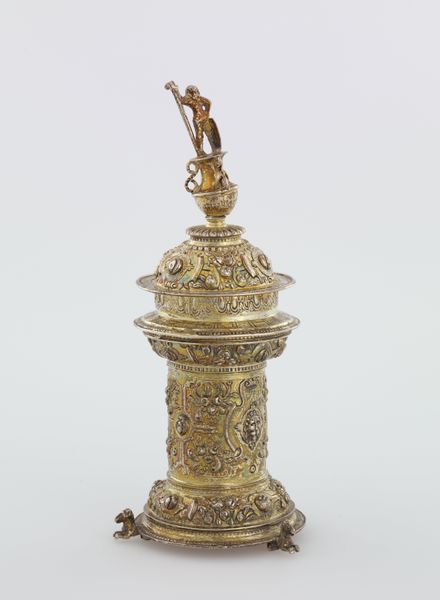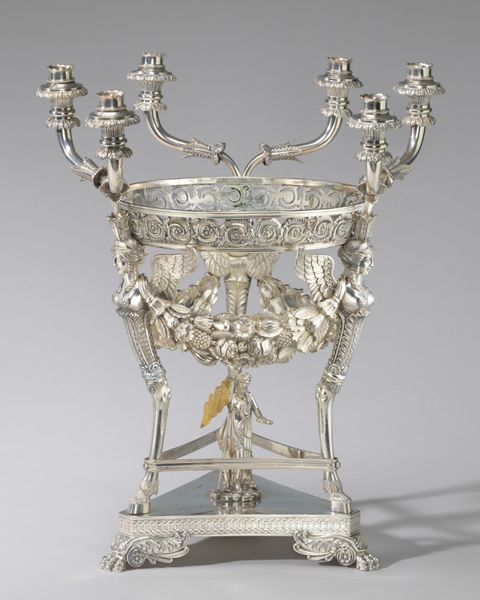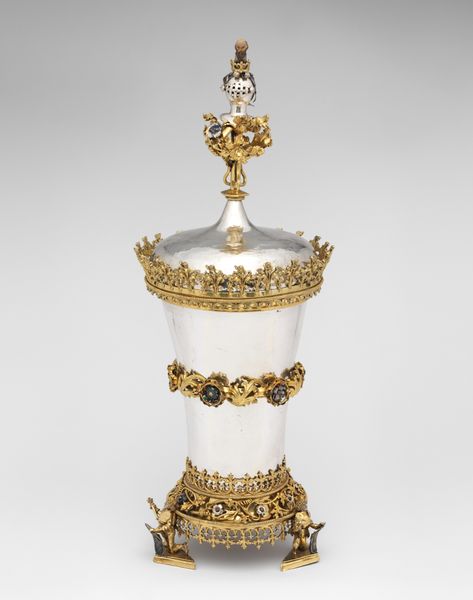
silver, metal, sculpture
#
silver
#
neoclassicism
#
metal
#
sculpture
#
figuration
#
sculpture
#
decorative-art
Dimensions: Overall: 13 1/8 × 10 3/8 in. (33.3 × 26.4 cm)
Copyright: Public Domain
This fruit stand, made by Paul Storr, is crafted from silver, somewhere around the turn of the 19th century. Silver is a soft and highly malleable material, ideal for intricate designs. It was likely formed through a combination of hammering, casting, chasing, and engraving. Look closely, and you can see how the reflective qualities of the silver enhance the object's form, catching the light and accentuating the three-dimensional figures. The piece speaks volumes about social status and consumption, as only the wealthy could afford such luxury items. The meticulous detailing indicates a significant amount of labor, reflecting the skilled craftsmanship of silversmiths during this period, who often worked long hours in workshops. Considering the intensive labor and costly material involved in its production, it's clear that this fruit stand was far more than just a functional object; it was a symbol of wealth, taste, and the artistry of the maker. The silver fruit stand invites us to appreciate the artistry and labor involved in its creation, and how it challenges the distinction between design and fine art.
Comments
No comments
Be the first to comment and join the conversation on the ultimate creative platform.

